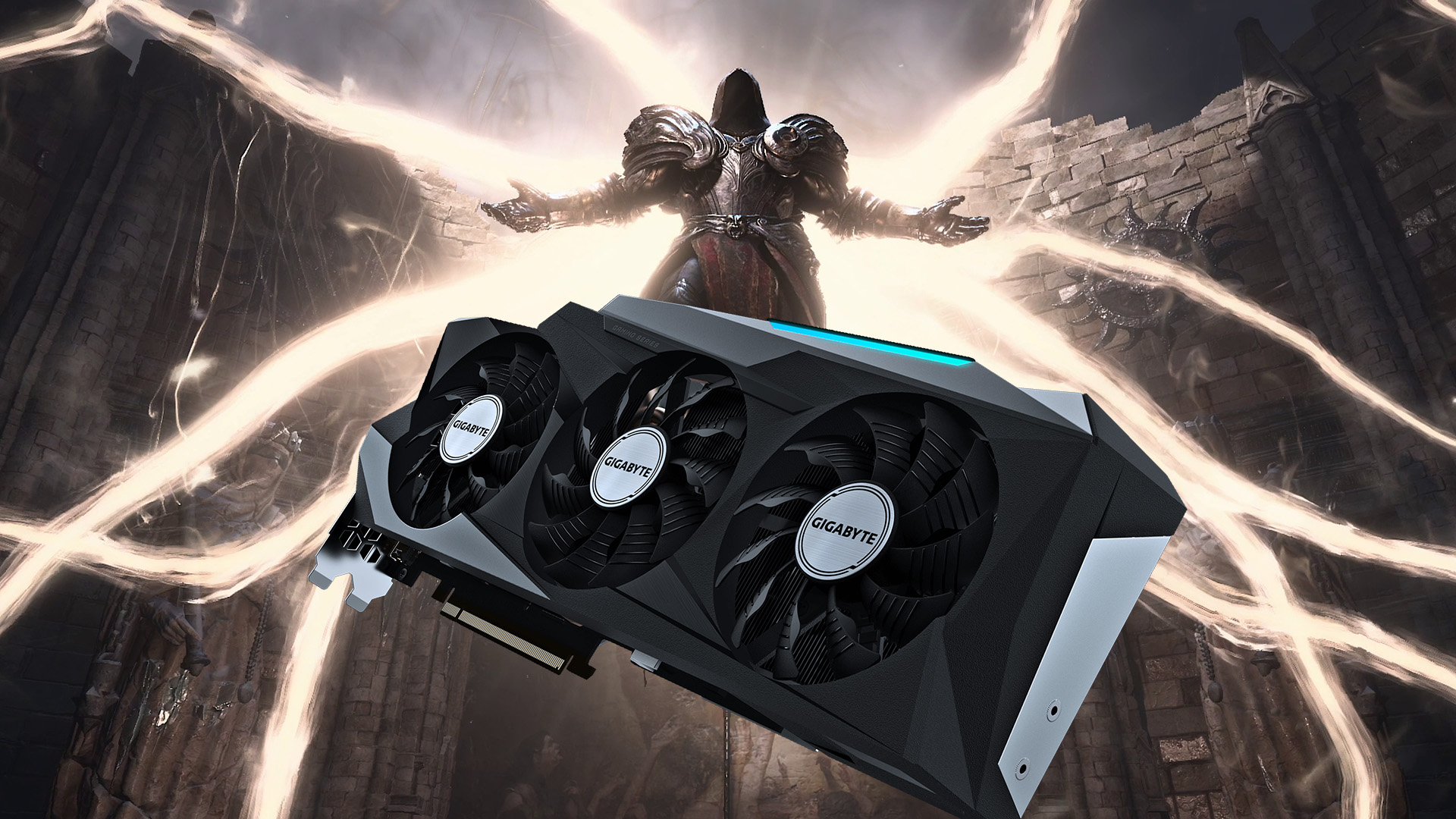Blizzard and Nvidia investigating reports Diablo 4 is killing RTX 3080 Ti GPUs
There's also something you can do right now to possibly help protect your graphics card from a similar fate.

Update: The Diablo 4 team are investigating reports of RTX 3080 Ti graphics cards crashing or dying while playing the game's closed beta. Customer support says Blizzard is "working closely with Nvidia to identify affected hardware configurations and gather as many data points as possible to assist in the investigation."
For affected users, the team offers the following advice in a forum thread:
If your card is still not working, try these troubleshooting steps:
- Conduct a complete power cycle (AC OFF->AC ON) and see if GPU can be detected under Windows.
- If GPU can be found under Windows, do a clean driver install.
Original story: Fresh reports suggest some RTX 3080 Ti graphics cards are running horribly, or even dying, while playing the Diablo 4 closed beta over the weekend.
In what appears to be an issue closely resembling when Amazon's MMO New World was bricking RTX 3090 GPUs, the Diablo 4 beta appears to expose a potentially fatal flaw in some high-end Nvidia GPUs. Across Reddit and the Blizzard forums, users are reporting that during the beta their monitors go black, GPU fans run full speed, and their system restarts. Sometimes these symptoms are also accompanied by an error code and a dead GPU, though not every time.
It appears that most of the users affected by the issue are using RTX 3080 Ti graphics cards manufactured by Gigabyte, however, the scale of the issue is not yet known.
YouTuber Mortismal Gaming also notes they suffered the same issue on a Gigabyte RTX 3080 Ti graphics card while playing the game.
Keep up to date with the most important stories and the best deals, as picked by the PC Gamer team.
Diablo 4 is unlikely to be the cause of the issue itself, more so a catalyst for exposing a weakness that may have already been present in the affected cards. This was the case with New World. EVGA noticed some poor soldering on a batch of its cards that, when running at extremely high frame rates and with spiky load—in that case while playing New World—would result in failure.
If that's the same here while playing Diablo 4, it may be on Gigabyte to address this issue, not Blizzard. Blizzard may also choose to limit the maximum frame rate in Diablo 4 to try and not expose players to any possible issues their hardware may have.
You can also likely protect yourself from these issues, but bear in mind that without all the information we can't be too certain as to how effective these measures may be. Still, heading into Diablo 4's open beta weekend, it's nice to feel like there's some sort of safety net for RTX 3080 Ti owners.
You can limit your frame rate in the game's options settings to potentially lessen the load on your GPU, but it's worth looking at doing it from within the Nvidia settings to totally ensure that your GPU is not running at the ragged edge.
How to limit your frame rate within the Nvidia Control Panel
- Open Nvidia Control Panel (right click on desktop)
- Scroll down to Manage 3D Settings
- Change Max Frame Rate to On
- Choose a max frame rate (your monitor's refresh rate will do)
- Click Apply
- You may need to restart the game or your entire system for the changes to apply
Those affected by the issue are requesting returns via the manufacturer, namely in this case Gigabyte, and we recommend you try the same if you find yourself stuck in the same situation. It's not yet clear how the returns process will work for this, or whether Gigabyte will replace those cards free-of-charge, but the first step would be for any such issue to be officially noted.
I'm told Gigabyte HQ is aware of the reports and taking them seriously, but the company hasn't issued any formal statement to us.
Best CPU for gaming: Top chips from Intel and AMD
Best gaming motherboard: The right boards
Best graphics card: Your perfect pixel-pusher awaits Best SSD for gaming: Get into the game first

Jacob earned his first byline writing for his own tech blog. From there, he graduated to professionally breaking things as hardware writer at PCGamesN, and would go on to run the team as hardware editor. He joined PC Gamer's top staff as senior hardware editor before becoming managing editor of the hardware team, and you'll now find him reporting on the latest developments in the technology and gaming industries and testing the newest PC components.


